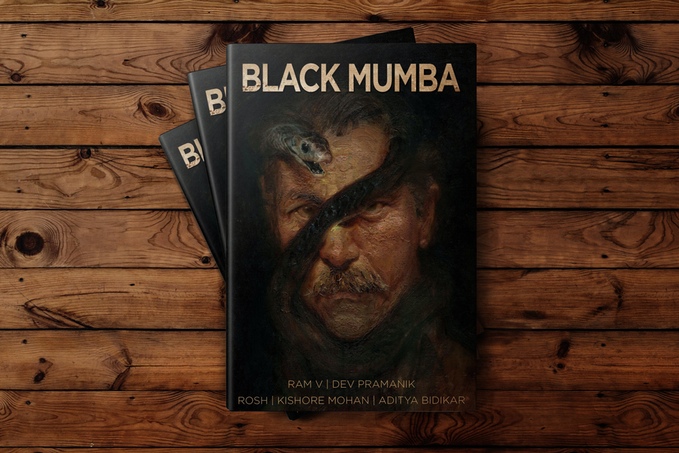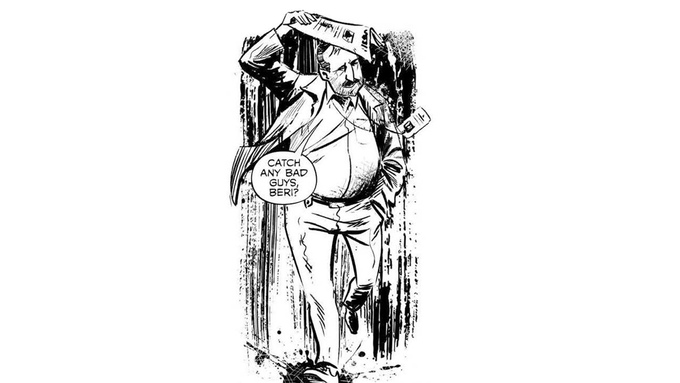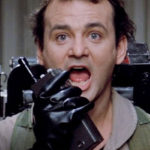
Written by Ram Venkatesan
Illustrated by Kishore Mohan, ROSH, and Devmalya Pramanik
Letters by Aditya Bidikar and Tomas Marijanovic
Review by Billy Seguire
 New York City. Los Angeles. Gotham. For decades, comics have mythologized cities just as thoroughly as they have characters. Within its microcosm, comics have shown these man-made constructions of concrete and steel to be growing figures, with personality and ritual all their own that define the people living within as easily as a fingerprint. To add to that constantly evolving tradition, Ram Venkatesan is currently funding Black Mumba as an anthology of four short comic stories centred around Mumbai, India. With a hardcover collection of the anthology currently funding on Kickstarter, Black Mumba represents the opportunity for foreign readers to experience a truly local comic story that’s true to its origins, pulling the reader through the secrets and hidden mythology of Mumbai in a murky haze of crime, violence, and dark magical influence.
New York City. Los Angeles. Gotham. For decades, comics have mythologized cities just as thoroughly as they have characters. Within its microcosm, comics have shown these man-made constructions of concrete and steel to be growing figures, with personality and ritual all their own that define the people living within as easily as a fingerprint. To add to that constantly evolving tradition, Ram Venkatesan is currently funding Black Mumba as an anthology of four short comic stories centred around Mumbai, India. With a hardcover collection of the anthology currently funding on Kickstarter, Black Mumba represents the opportunity for foreign readers to experience a truly local comic story that’s true to its origins, pulling the reader through the secrets and hidden mythology of Mumbai in a murky haze of crime, violence, and dark magical influence.
Unlike other stories of the genre, Black Mumba is a noir without any real criminals to hunt. Mumbai is the focus, and the everyday streets of the Indian city beat with the authentic heart of its crowded populous. It’s the type of storytelling we’ve seen about New York a thousand times, but the insider’s perspective is rarely so well achieved in a foreign setting that the differences may be jarring. Not so much a different kind of story, there’s such familiarity to the tropes and characters used that it highlights the cultural differences inherent in the society itself. The book consistently uses noir as a genre to act as our gateway into Mumbai, exposing us slowly to aspects that make the city flesh and blood. These are relatable stories that speak of the evils of a world dominated by men in suits that try to make sense out of chaos. Even when it’s foreign to the reader we know the noir aesthetic will keep us following a central path.
Through all four stories of this set, Dev is the weary police inspector who leads us through each story of death, violence, and oppression with a constant strain on his own mental health. Though it’s not about him, there’s a continuing arc through all four comics that shows the fallout of a man dealing with the tensions of a city the size of Mumbai that’s both relatable and familiar. Putting a gun to his head in the opening of the first story, Dev’s inner dialogue constantly questions his use and purpose. Along with partner Beri, who adds some levity to the proceedings, these two create a throughline to the true central character of Black Mumba, Mumbai itself, by keeping us at arms lengths from the stories themselves and allowing us the chance to view them from their perspective.
Tonally, the book is appropriately grim. Black and white art emphasizes the pulp storytelling of Black Mumba, keeping light and darkness at the forefront of a noir story that takes itself and its surroundings seriously. The first three stories wallow in the gritty realism, showcasing the unique features of Mumbai such as billion-dollar skyscrapers and Zoroastrian towers of silence that highlight a city embracing its modern momentum while also carrying the weight of its past. With a story ending on a magical note that combines the history and mythology of Mumbai into comic form, there’s a bit of an upward swing near the end of the book that’s rewarding to readers of all four of Ram V’s stories. It’s tough to say whether it’s a good or bad thing for the genre, but ending on a positive note was clearly an honest decision for the creators when the book was clearly crafted with a love for the city of Mumbai and the voices that speak throughout its streets.
With the varying art styles of an anthology, there’s a fluidity to the storytelling that allows Black Mumba to stretch itself creatively without feeling disjointed. The animated style of human characters in Rats in the Dark makes the anthropomorphism of rats to demonstrate issues of India’s overpopulation work, while It’s a Wonderful World wouldn’t hit as hard as an opening to the reader without the realistic depiction of Dev alone in his car. I have to say I prefer the simpler styles of ROSH and Mohan to the more complicated and detailed work of Pramanik. Though the latter’s art is darkly beautiful in representing the dense emotional turmoil of Dev’s tortured character, the use of simplified figures and stylized, almost animated movement to portray the grit of Mumbai as a whole was more appealing for my tastes.
The Verdict:
Check It Out. There’s far more than yet another noir story rehashing old tropes going on in Black Mumba. Stepping into the inner world of Mumbai will be a fresh experience for readers, plunging them into the darkest depths of India’s largest city without restraint for this insider’s view. It’s the kind of book that whets your appetite rather than fulfils you, and that hunger for more locally influenced Mumbai stories is likely part of the point. I’ll definitely be watching out for Ram V and his group of collaborators on this project, holding my breath for more Black Mumba in hopes that future volumes of this series can be produced.
It’s an expensive plunge to back the actually 100 page book, with £20 ($30 US) to buy physically. Yet purely as an object to hold, the physical version of this book looks absolutely stunning, with gorgeous cover art and deep, rich, varied art that propels this four story collection into something worth owning for your shelf. With less than a week left in the campaign, Black Mumba is fully funded, but a stretch goal has been added for both making of material and a bonus copy to be delivered digitally for all backers. Check out the project before June 10 to be involved in this fascinating noir anthology.




![[REVIEW] WORLD-BUILDING AND FATHER-SON COMPLICATIONS MAKE EXCELLENCE #1 A STAND OUT](https://geekd-out.com/wp-content/uploads/2019/05/excellence-1-996x515-150x150.png)